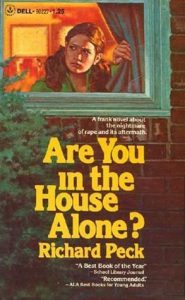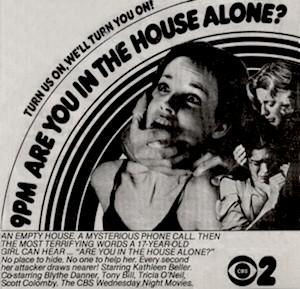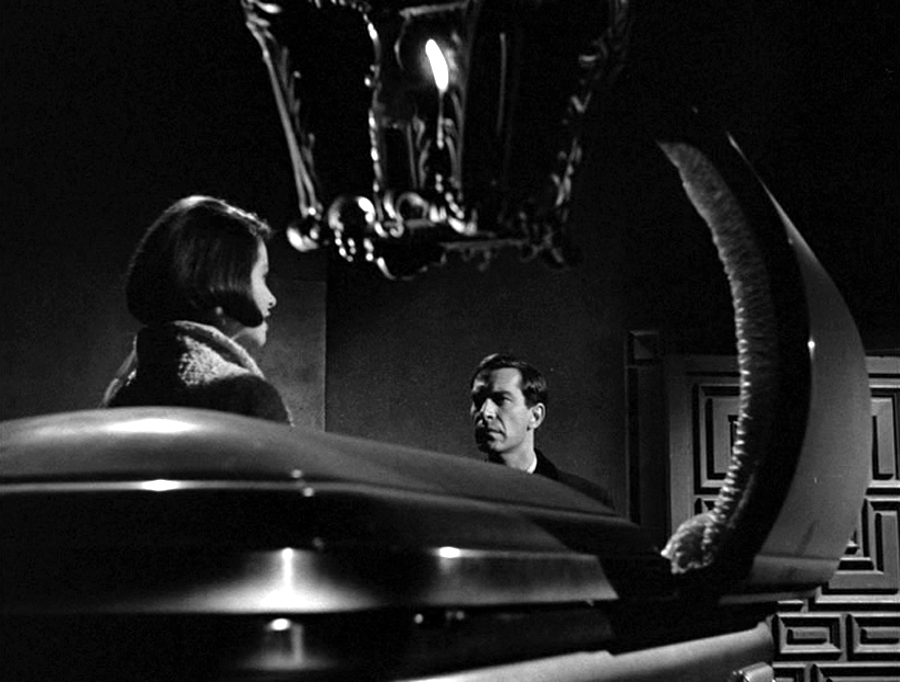Are You in the House Alone? (1978) by #WalterGrauman
w/ #KathleenBeller #BlytheDanner #TonyBill
"An empty house. A mysterious phone call. Then the most terrifying words a 17-year old girl can hear…"#MadeForTV #Horror#NotQuiteClassicCinema pic.twitter.com/u2UsVxV8Sv
— Angus Kohm (@AngusKohm) June 19, 2021
As I’ve mentioned before, I’m really enjoying the made for TV movies these days. – particularly made for TV horror films. For those keeping track of such things, Are You in the House Alone? (1978) is the second feature on the Shout Factory TV Terrors DVD that I purchased a while back. Normally I might wait longer before diving in and watching the second film in a set like this, but I enjoyed The Initiation of Sarah (1978) so much that I just couldn’t resist.
 I had heard of Are You in the House Alone?, but much like The Initiation of Sarah I had never seen it before. I knew that it was based on a book by Richard Peck, as I used to come it across it fairly regularly at thrift stores and The Children’s Hospital Book Market. I never read the book and didn’t know a whole lot about it. I always imagined that it was about a teenage girl at home alone getting menaced by some kind of psychopath. Perhaps a toned down slasher film (in book form) with no body count, in which we skip right to the final girl getting stalked and chased and finally doing battle with (and defeating) the killer. And, of course, all of it would be suitable for young readers in some PG sort of way.
I had heard of Are You in the House Alone?, but much like The Initiation of Sarah I had never seen it before. I knew that it was based on a book by Richard Peck, as I used to come it across it fairly regularly at thrift stores and The Children’s Hospital Book Market. I never read the book and didn’t know a whole lot about it. I always imagined that it was about a teenage girl at home alone getting menaced by some kind of psychopath. Perhaps a toned down slasher film (in book form) with no body count, in which we skip right to the final girl getting stalked and chased and finally doing battle with (and defeating) the killer. And, of course, all of it would be suitable for young readers in some PG sort of way.
It turns out that I had no idea what I was getting into when I watched Are You in the House Alone? last week. I am not a fan of SPOILERS, but I think I can reveal the big plot point that shocked me without ruining anything. The film revealed it in the first five minutes, so I think it’s fair to say that it’s not a spoiler at all. Are You in the House Alone? is about rape.
It is revealed to us in the opening scene that our main character – Gail, played by Kathleen Beller – is raped by her attacker. They ask her who he is, but she says “I can’t tell you… No one would believe me…” And then we flash back to how it all began.
It struck me as a strange way to begin a movie like this. But as the story progressed, I started to appreciate the brilliance of it. Now that we know what is going to happen to Gail, it becomes an unusual kind of suspense story – and a mystery. We know that her attacker is going to be someone that no one would ever suspect, so we find ourselves (at least I did) carefully scrutinizing each male character that Gail interacts with – could he be the one? What about that guy? The suspense builds as we try to figure out who it is, partly due to that strangely human belief that if we can figure it out before it happens, we might be able to stop it. Anyone who has ever re-watched a movie and caught themselves hoping that a character (perhaps even shouting warnings at them) isn’t going to go into that scary looking house this time and get herself killed can back me up on this. We know what’s going to happen, but we’re still on the edge of our seat hoping that it won’t.
Surprisingly, we learn the truth about an hour into the movie, and then it becomes something else…
At the time that this movie first aired, I was a big fan of the TV show Quincy M.E. (1976-83). It was about a medical examiner who, each and every week, would uncover cases of injustice often due to a broken or flawed system. Laws that were unjust, rules that made no sense – or even a lack of laws and rules where there should have been some – would inspire Quincy to go above and beyond his job and crusade for changes in the system. Most of the episodes were left open ended because the show was shining a light on an actual problem in the real world and hoping that by doing so, someone might be moved to change it.
In it’s final act, Are You in the House Alone? becomes a little bit like an episode of Quincy, as it exposes the injustices of a system that fails the victims of rape. Gail feels that she can’t tell the truth – and that even if she does, her attacker will never be punished. She and her parents (played by Blythe Danner and Tony Bill) come up against attitudes, beliefs, and laws that seem to protect the rapist more than his victims. It feels ahead of its time (and still all too relevant today) but truthfully it’s the kind of story that Quincy might have taken on (and perhaps even did). In any case, it’s compelling viewing, and works on many different levels.
Shout Factory included Are You in the House Alone? in its TV Terrors set, which strongly implied that it was a horror film. In some ways it is – what happens to Gail is certainly horrific and nightmarish, and it contains some suspenseful sequences – but you would not be wrong to also label the movie as a drama, It’s a much more serious minded film than I expected – but I think that’s basically a good thing. If it was just another watered down, family friendly version of a slasher film, how interesting would it be?
Are You in the House Alone? (1978) is another fine example of #NotQuiteClassicCinema made for TV in the 1970s. As I’ve said before, if you didn’t grow up watching these kinds of movies at your home drive-in, you might not appreciate it quite as much as I do. This one, however, will be of interest to fans of issue-oriented movies of the week, and people who are curious to see an early exposé of rape culture, gender discrimination and the unjust patriarchal system. And if that doesn’t sound like a fun and fascinating #FridayNightAtTheHomeDriveIn, then you clearly didn’t grow up in the 1970s…



